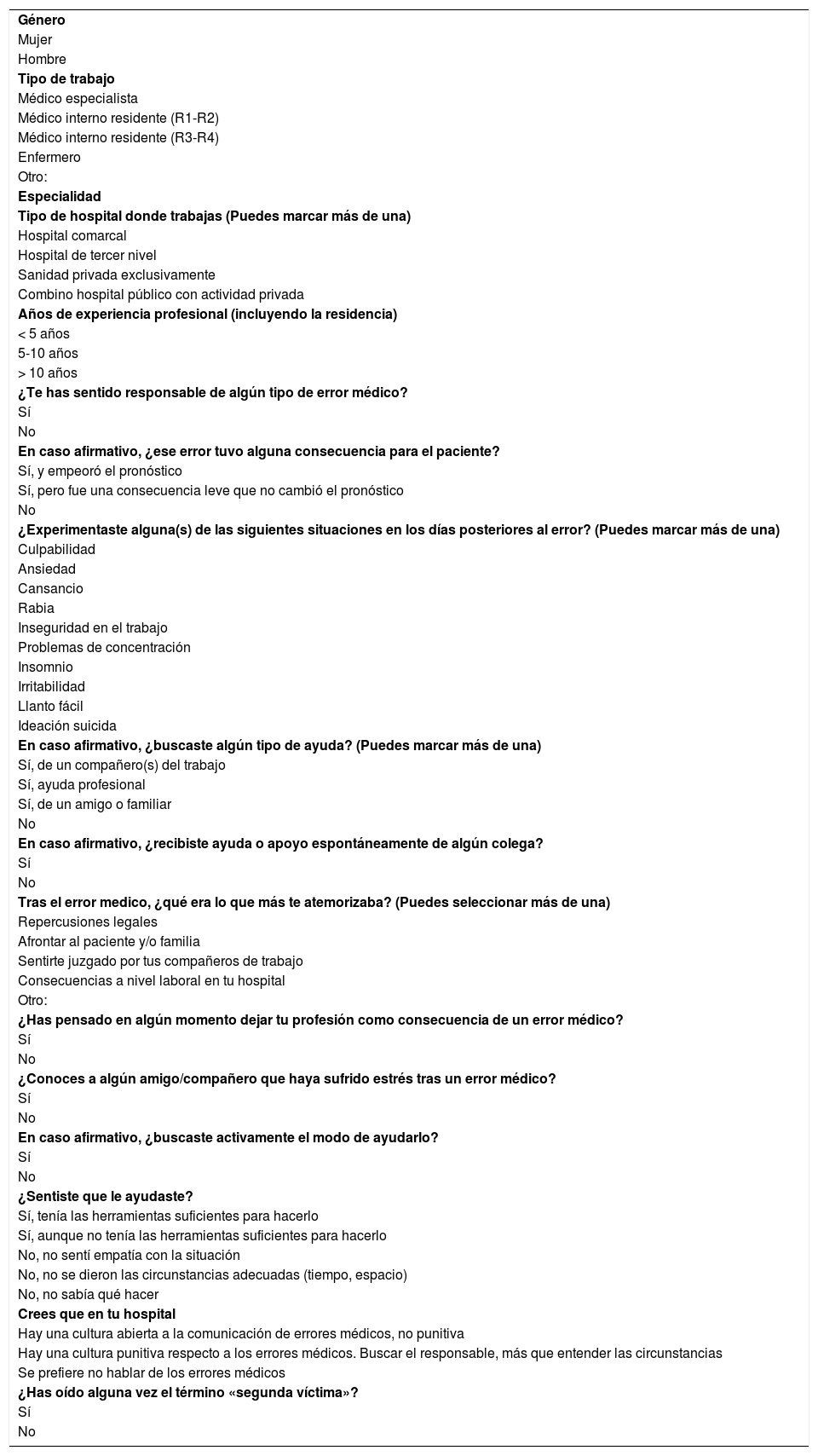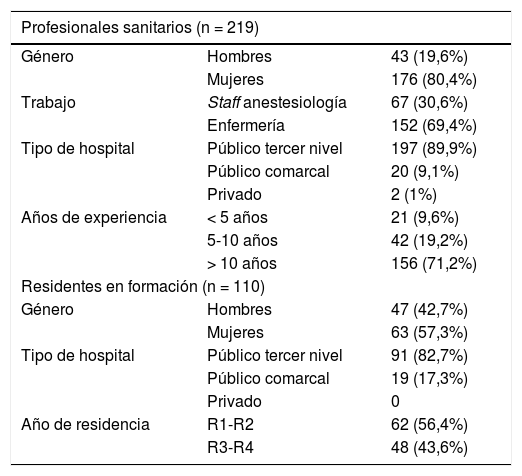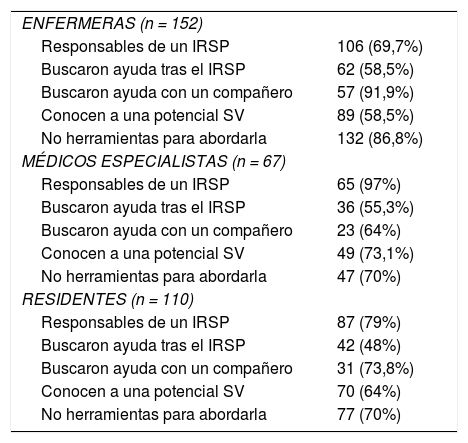Una primera fuente de apoyo eficaz y accesible para las segundas víctimas (SV) son los compañeros, que deberían tener herramientas para ayudar emocionalmente y detectar el curso inusual de una SV. El objetivo del trabajo es evaluar la percepción de profesionales de la salud sobre el fenómeno, así como su capacidad para aplicar primeros auxilios psicológicos (PAP).
Material y métodosEstudio descriptivo observacional mediante encuestas online respondidas anónimamente. Los participantes fueron profesionales de un área quirúrgica mayoritariamente de un hospital de tercer nivel.
ResultadosTrescientas veintinueve respuestas (67 anestesiólogos, 110 residentes de anestesia, 152 enfermeros); 78,4% se había sentido SV, más frecuente entre anestesiólogos; sin embargo, el 58% no había oído hablar nunca del término. La culpabilidad fue la emoción más frecuente. Los residentes temían más al juicio de los compañeros y pensaban más en deserción laboral. La mayoría de los que buscaron ayuda, lo hicieron con un compañero, pero la mayor parte no se sintió útil al ayudar a una SV. El 66% afirmaron que la cultura del centro es aún punitiva, evasiva o de silencio.
ConclusionesA pesar de lo frecuente del fenómeno, aún existe desconocimiento del término SV. El impacto del fenómeno es heterogéneo variando en función de la experiencia y de la responsabilidad. Los compañeros son la primera fuente de ayuda emocional, pero se percibe una falta de herramientas para ser capaces de proporcionarla. Se insta a las instituciones a crear programas formativos para que los profesionales puedan garantizar los PAP.
An effective and accessible first source of support for second victims (SV) is usually the colleagues themselves, who should have tools to help emotionally and detect the unusual course of a SV. The aim of this work is to assess health professionals’ perception of the phenomenon, as well as their capability to apply psychological first aid.
Material and methodsObservational descriptive study through online surveys answered anonymously. Participants were different health professionals from surgical area, mainly from a third-level hospital.
Results329 responses, 67 anaesthesiologists, 110 anaesthesiologists in training, 152 nurses. 78.4% had felt SV, more frequent among anaesthesiologists; however, 58% had never heard of the term. Guilt was the most frequent emotion. Residents were more afraid of judgmental colleagues and thought more about drop out their training. From those who sought help, most did it through a colleague, but most did not feel useful in helping a SV. 66% affirmed there is a still punitive, evasive or silent culture about medical incidents.
ConclusionsDespite the frequency of the phenomenon there is still lack of knowledge of the term SV. Impact of the phenomenon is heterogenous and changes based on experience and responsibility. Colleagues are the first source of emotional help but there is a lack of tools to be able to provide it. Institutions are urged to create training programs so that professionals can guarantee «psychological first aid».
Artículo
Comprando el artículo el PDF del mismo podrá ser descargado
Precio 19,34 €
Comprar ahora













